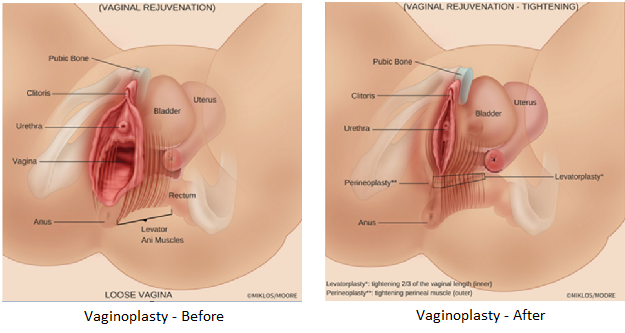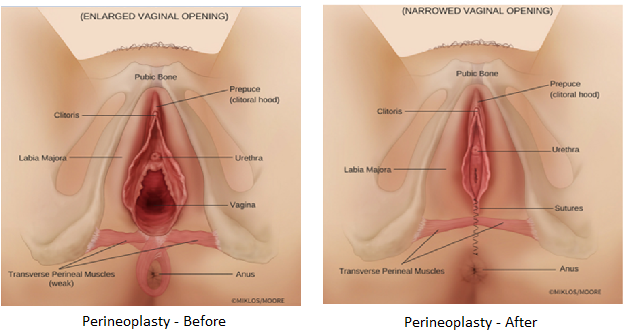
Vaginoplasty is a procedure that aims to “tighten up” a vagina that’s become slack or loose from vaginal childbirth or aging. Some surgeons claim it can even improve sensitivity — a claim the American College of Obstetricians and Gynecologists (ACOG) has strongly challenged.
While it’s true that vaginal tissues can stretch, surgically tightening the vaginal tissue in itself cannot guarantee a heightened sexual response, since desire, arousal, and orgasm are complex, highly personal responses, conditioned as much by emotional, spiritual, and interpersonal factors as aesthetic ones. In addition, sexual “sensitivity” doesn’t automatically lead to more pleasure – it can actually lead to pain.

The muscles of the pelvic floor are known as the levator ani muscles these are the same muscles that patients use during Kegel exercises. These muscles are the point of lateral attachment of the ceiling of the vagina and floor of the vagina. When nerves of the tailbone i.e. sacrum are damaged, this reduces the electrical impulse into the levator muscles and over time the fascia of the ceiling of the vagina and the floor of the vagina rip from the muscles resulting in further relaxation and vaginal prolapse. Vaginal prolapse can manifest as a cystocele (bladder drop), rectocele (rectum bulge), enterocele (intestinal bulge) and vaginal vault prolapse (the deepest portion of the vagina falls). It is impossible to fix the damaged nerves of the pelvic floor so options in therapy include strengthening the muscles by:
|

The options above only enhance or workout the muscles of the pelvic floor and do not treat the nerves nor the fascia. Since most patients with severe pelvic muscle and fascia damage can’t fix their problem with the above minimally invasive techniques the patients often turn to surgery which usually requires the patient have her prolapse fixed concurrently with the tightening of her vagina.
However, simply fixing the vaginal prolapse will not tighten the vagina!! All too often uninformed plastic surgeons, gynecologists, urologists and urogynecologist make this very mistake and the patient undergoes a surgical procedure with little benefit. Vaginal tightening is an art and requires training and experience to achieve the best outcomes. Dr. Ali Youssef Abed Ali is your best choice in order to achieve the perfect result!

